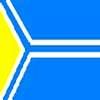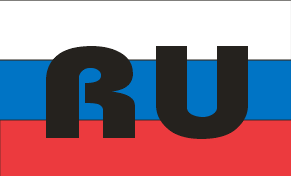



|

|

|
Salt and mud lakes are veiy popular in the Republic of Tuva. Natural brine and mud are used to cure a wide range of diseases: orthopedic disorders, spinal aches, bone and muscle aches, diseases of perepheral and central nervous system, blood vessels, skin and gynecology diseases. Among the well known lakes are: Chedder, Dus-Hol (near Svatikhovo); Khadyn, KJiak-Hol (Central Tuva, about 40-45 km to the south of Kyzyl); Dus-Hol, Bie-Hol, Shara-Nur (Ubsunur hollow, southern part of Tuva). Other lakes are: "Wite Lake" (About 70 km to the north of Kyzyl); Ak-Hol and Dustug-Hol (south-west Tuva); Nogaan-Hol (north-east Tuva). There are a lot of legends about healing power of these lakes: "I was brought here on stretchers and walked back by myself.

Lake Chedder became a republican health resort which bears the same name. People from other republics come there. The banks and the bottom of the lake are covered with silt hydro-sulfide mud. The Layer is 1 meter thick in the centre of the lake. Mud stock which can be used for medical purposes is large enough and is estimated to be approximately 1,5 mln. cubic meters. By its physical and chemical characteristics the most valuable mud is in the northern part of the lake. The mineralization of the natural brine is 115 g/l(1989 data) and can be considered as strong brine. The macrochemical composition: sulphate-chloride-magne-sium. The best analogues are: lakes Uchum and Bohhoy Tambukhan (Pyatigorsk):
The favorite place for holiday-makers of Kyzyl and especially for children is Hadyn lake. From May to September one can see colorful tents and all kind of vehicles on the banks of the lake. Since mineralization is not high (14 g/1) and lakeside waters are shallow, people enjoy bathing in the warm sandy-bottom lake. Indeed this is equally pleasant and healthy. The mineral composition is: sulphate-chloride-sodium-magnesium. Dermatologists recommend bathing in the lake that is useful for the treatment of some childhood diseases. The medicinal effect is similar to that of a salt lake, but due to lower mineralization the skin irritation is less. The best analogue is the famous Shira lake (Khakass Autonomous Region).
Lakes Dus-Hol (Svatikovo) and Dus-Hol (Samagaltai) bearing the same tuvian names have approximately the same chemical composition: chloride-sulphate-sodium-magnesium and the rate of mineralization -167 and 143 g/1 accordingly. Besides, both lakes are unique - having the heliothermal effect, which means focusing the sun radiation by lake saline water which accumulates at the bottom. That is why the low layers and bottom mud have higher temperature (up to 40-42° C) than the upper layers (15-2CP C). This results in better medicinal effect of mud application in particular. The best analogues in the CIS are lakes Krasnoye or "Red" (Zaporozhye, Sea of Azov seaside), Mie-Balyk (Kazakhstan), Saky (Crimea, Ukrain), Shaboltan estuary (Odessa region). Lake Samagaltai is famous for its salt the production of which still goes on. Lake Svatikovo is distinguished for its fauna (in spite of high concentration of salt) - small red crawfish. Their role is great as they purify the water by filtering it.
Lake Ak-Hol ("Wite lake") is situated in the mountain hollow and looks really white when you glance at it from a far distance as snow mountain peaks are reflected in its water glass. The lake is of glacier origin. Mineralization is low (1,4 g/1) and water is of chloride, hydrocarbonate, sulfate, magnesium composition. It contains silicic acid in balneological quantities. The fauna consists of small crawfish and differs from that living in the lake Svatikivo. According to local people, bathing in the lake is advisable in case of thrombosis and varication. There is a lot of stories about the healing effect of the lake's foam which cures skin diseases. This information requires detailed mostly medical studying. The mud from the lake which is dark grey with a faint scent of hydrogen sulphide is also used in medical purposes. The medicinal properties of this mud also require further examination.
The medicinal mud of the above mentioned lakes is of various colour-from dark grey to deep black which depends on the conditions of its formation. The conventional wisdom has it like that: the darker is the colour - the better is the mud, though the local people see no difference. In the north-east of the republic not far from the famous lake Azas there is lake Nogaan-Hol ("Green lake"). It's really green and not only because of green leaves of the surrounding trees reflected in its water, but because it contains some dissolved mineral which gradually falls out. In the eastern part of the lake there is mud of... green colour. The mud is soft, sticky. The local people think it has good medicinal effect and every year many tents are put up on the bank of the lake. Shepherds and reindeer-breeders usually come and bathe there for treatment of rheumatic fever.
Unfortunately this small brochure cannot describe all outstanding mineral aijaans, salt and mud lakes of the Tuva Republic, but it's pertinent to mention some medicinal mineral waters without specific components and properties. Among them are" some mineral springs on the territory of the health resort "Chedder", the spring on the 9-th kilometer of the road Kyzyl (its mane is "ninth"), the one in the place Seneg (Ulug-Hem region) and the spring falling into salt lake Dus-Hol (Svatikivo) in the east.
The mineral water of the Chedder borehole is used for inner consumption. Besides, Kyzyl brewery saturates water with carbon dioxide, bottles it and sells under trade mark "Arjaan". The mineral water which is of great demand is both tasty and good for health. The mineralization of Chedder arjaan is 3,5 g/1 and consists of chloride-calcium-magnesium. The spring has silicic acid in sufficient quantities. In some way mineral waters of the health resort "Kemery" (Lithuanian Republic) and "Feodosiya" (Crimea) which are used for inner consumption and baths could be regarded as analogues of the above-mentioned arjaan.
The spring situated in the place Senek (Ulug-Hem region) about 8 km to the south of a small town Haierakan has good prospects to set up mineral water bottling plants. Local people call this spring "Arjaan Senek". It is the low mineralized water (3 g/1) of sulphate-chloride and sodium-calcium composition. The existance of organic carbon in balneological quantities has been discovered and this requires special seasonal quality and quantity research. There is no radon though local people call it a radon spring. By macro-chemical composition the best analogues are mineral waters of Monino (Moscow region), Izhevsk (Tatarstan), Makhachkala (Dagestan). These waters are good for inner consumption for treatment of the digestion system, urine system (for example pyelonephrite, cystitis), endocrine system and metabolism.
The Senek arjaan has approximately the same rate of mineralization and chemical composition as the spring Dus-Hol (Svatikovo).
|
Author: Kara-Kys Donghak Arakchaa
tyvakyzy@umail.ru
Veb design: Taybyl Chingis tci@ngs.ru |